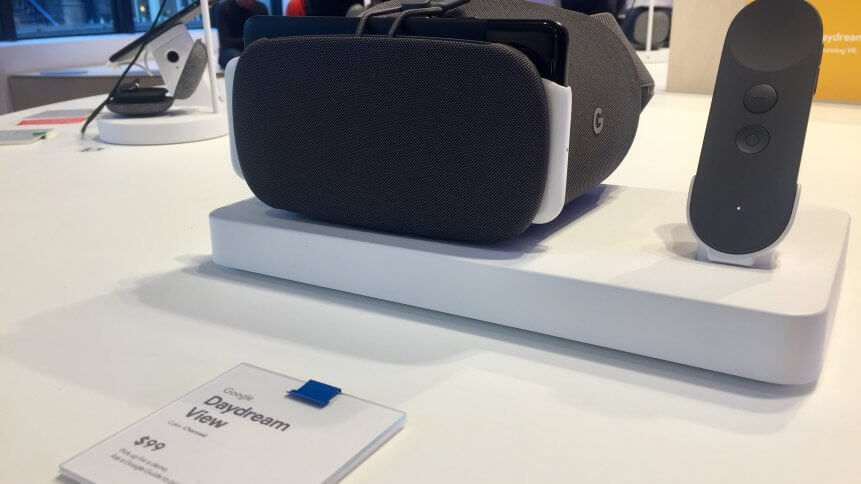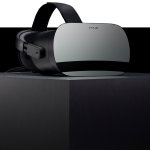What businesses can learn from the death of mobile VR

We are approaching the time of year where journalists and technologists alike will attempt to gaze into their virtual crystal ball. It’s time to prepare our newsfeeds for another round of predictions of what tech trends will dominate 2020.
Giant tech companies will then create new products and services that fuel the hype of these latest tech trends. But they seldom step up to their responsibilities of educating both businesses and users on how it works or how to consume it. The result is a world where everyone falls in love with the technology itself, rather than solving real problems.
Gary Vaynerchuck recently advised business leaders at WCIT 2019 that businesses should stop wasting their time trying to chase the next big tech trend. He warned that their relentless pursuit of trying to stay ahead of the digital curve is resulting in businesses neglecting the needs of their customers here in the present.
For example, in November 2015, there was no escaping the brave new world of mobile VR. Samsung Gear arrived, and Google would release its Daydream View mobile headset the following year. Businesses quickly formed think tanks on how they could leverage VR for the inevitable moment that their customers lock themselves away in immersive experiences.
After failing to convince its customers that 3D TV was the future, Sky TV hopped on the virtual reality bandwagon and rushed out a VR app and promised to take viewers beyond reality. Did anyone stop to ask consumers if they were ready to embrace an inconvenient setup process and strap a contraption to their head that would quickly drain their smartphone batteries?
In the run-up to Halloween, we once again find ourselves wandering around the tech graveyard of products and services that failed to live up to its hype. Google is adding mobile VR to an increasingly long list of abandoned projects. Elsewhere, Oculus CTO John Carmack is suggesting that the “days are numbered” for Samsung Gear VR, and the BBC shut down its VR hub.
In defense of VR, many have argued that smartphone VR was always destined to fail. As the VR market continues to mature, hardcore techies are migrating to a stand-alone device that offers higher resolution and far superior performance.
However, the bigger problem for VR is how do you convince people outside of the tech community to invest $400 into Oculus Quest? How do you keep mainstream audiences using it? And even if you succeed, is that really such a good idea?
Technologists are currently debating how the lack of consumer and developer engagement is to blame. Ironically, editors have already moved on can be heard asking their writers to create a new set of tech trends to get excited about next year. Prepare for the cycle to begin once again.
What if we dared to step outside of the echo chambers and step away from our newsfeeds? Would we quickly realize that the success of any future technology will all depend on securing mainstream adoption? Without it, projects will perish. But still, we are seeing new tech solutions that are merely a solution looking for a problem, rather than the other way around.
As one tech-based solution dies, we instantly put another on the pedestal. But isn’t it time we stopped repeating the mistakes from our past? Upon the demise of 3D TV, several articles appeared insisting that this time, it will be different, and virtual reality is succeeding where 3D TV failed.
We are now all-too-familiar with how these stories end in this increasingly tiresome narrative. But I am hopeful that when the onslaught of the next big thing for 2020 stories arrive on our newsfeeds, businesses will offer a little restraint. Getting back to solving real problems and understanding what customers are doing right now rather than what they will be doing in five years.
Virtual reality, 5G, Blockchain, and augmented reality could go on to transform the digital landscape. We are living in an exciting age of transformational change. But our insatiable desire for instant gratification has fooled many into thinking it will all happen overnight. But adoption by developers, businesses, and consumers takes much longer than many realize.
Rather than trying to predict the future, maybe business leaders should look at what their customers have already adopted and are using right now. For example, many of your employees will be listening to a podcast on the way to the office. Others will be minimizing their browser listening to a 2-hour Joe Rogan show in the office. Maybe it’s time to think about an audio strategy.
Takeaways from the McKinsey’s Digital Consumer Trends Report suggest that digitally powered physical retail innovation and social commerce strategies should also be explored as a priority. Despite what the headlines will tell you, mobile-first consumers are motivated by time, speed, and convenience, not the future tech trends for 2020.
Observing what motivates your customers right now and solving their problems is much more valuable to your customers than asking them to strap a VR handset across their faces. But you knew that all along, right?









